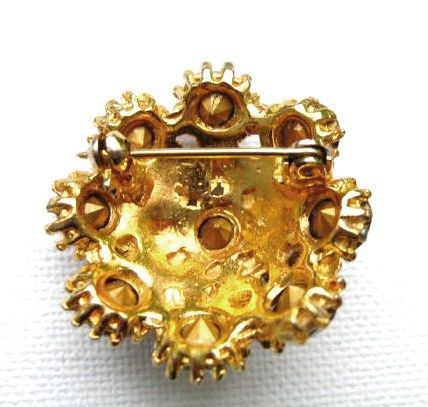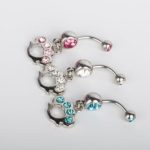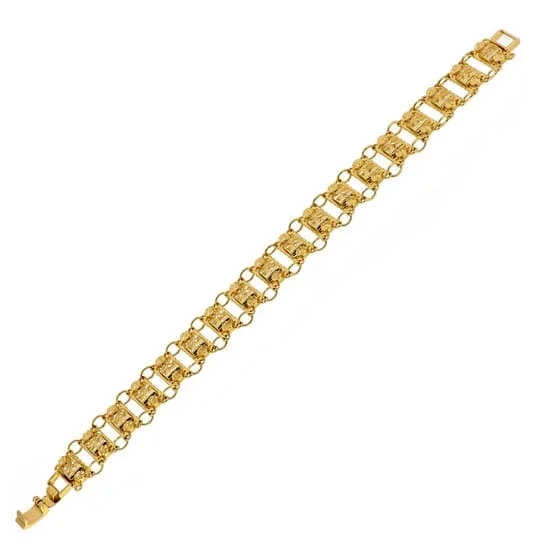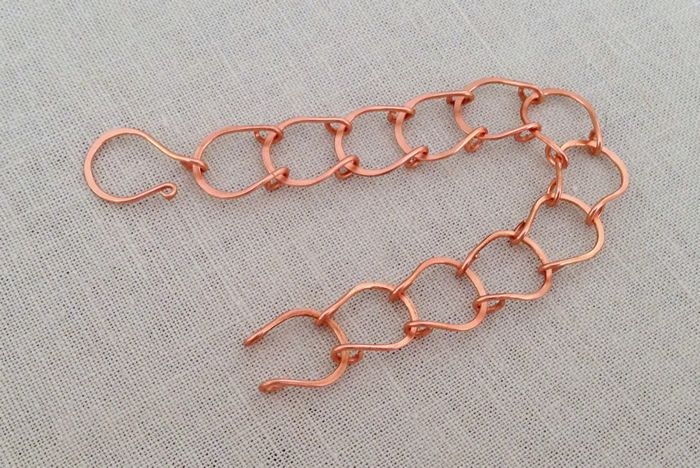Diamond jewelry has long been admired and desired for its exquisite beauty and timeless allure. Whether it’s a dazzling engagement ring or a sparkling pair of earrings, diamonds hold a special place in our hearts and symbolize luxury, elegance, and everlasting love. If you have diamond jewelry that you’re ready to part with, knowing how to sell it effectively can ensure you get the best value for your precious pieces.
In this article, we will guide you through the process of selling diamond jewelry step by step. We’ll start by discussing the current market demand and trends so that you can make informed decisions about pricing and presentation. Understanding the quality and value of your diamond jewelry is essential, so we’ll demystify the famous “4 Cs” – cut, color, clarity, and carat weight. Armed with this knowledge, you’ll be equipped to set the right price for your pieces.
Next, we’ll dive into the world of online selling by exploring how to create an eye-catching listing that showcases your diamond jewelry in the best light. Social media platforms like Instagram, Facebook, and TikTok have become powerful tools for selling all kinds of products – including diamonds – so we’ll show you how to leverage these platforms effectively.
Building trust and credibility is crucial when selling high-value items like diamonds, so we’ll discuss certifications and transparent communication techniques.
Reaching potential buyers is another important aspect of successful diamond jewelry sales. We’ll provide tips on targeted advertising and networking within the jewelry industry to connect with interested buyers who appreciate the value of your pieces. Negotiating and closing deals requires finesse and skill, so we’ll share essential tips for successful salesmanship.
Finally, ensuring a safe transaction is paramount when it comes to selling pricey items like diamonds. We’ll explore security measures to protect yourself as well as your buyer throughout the process.
Selling your diamond jewelry can be a rewarding experience when done right. After reading this comprehensive guide, you’ll be armed with the knowledge and strategies to successfully navigate the market, showcase your pieces, reach potential buyers, negotiate deals confidently, and ensure a safe transaction. So let’s dive in and celebrate the success of selling your diamond jewelry while exploring future possibilities.
Understanding the market demand
In order to successfully sell your diamond jewelry, it is crucial to have a deep understanding of the market demand and stay updated with the current trends and preferences. By researching and analyzing the market, you can tailor your selling strategies to meet the needs of potential buyers and maximize your chances of making a successful sale.
One important factor to consider when researching market demand is the current trends in diamond jewelry. Fashion trends can greatly influence what buyers are looking for, whether it’s specific styles, colors, or cuts of diamonds. For example, rose gold has been particularly popular in recent years and may appeal to a wide range of buyers. Keeping an eye on industry publications, fashion magazines, and online jewelry communities can help you identify emerging trends.
It’s also essential to understand the preferences of your target audience. Different demographics may have varying tastes when it comes to diamond jewelry. For instance, younger generations might prefer more unique and modern designs, while older generations may lean towards classic styles. Conducting surveys or feedback sessions with potential buyers can provide valuable insights into their preferences. Additionally, studying customer reviews and feedback on similar products can help you understand what features and qualities are most appealing to buyers.
By understanding the market demand, you can strategically position your diamond jewelry as desirable and relevant to potential buyers. This knowledge will guide you in selecting appropriate marketing methods, setting prices that align with market expectations, and showcasing your products in a way that captivates your target audience.
| Market Demand Factors | Actions |
|---|---|
| Researching current trends | – Stay updated with industry publications
|
| Understanding target audience preferences | – Conduct surveys or feedback sessions
|
| Marketing methods | – Tailor marketing campaigns to highlight the unique features and qualities of your diamond jewelry that align with market trends and preferences |
| Pricing strategy | – Set prices that are competitive, yet reflect the perceived value of your diamond jewelry based on current market demands |
| Product showcasing | – Present your diamond jewelry in a way that appeals to your target audience’s taste and preference |
Evaluating the quality and value of your diamond jewelry
When it comes to selling diamond jewelry, one of the most crucial steps is evaluating the quality and value of your pieces. This involves understanding the four Cs: cut, color, clarity, and carat weight. By delving into each of these factors, you can accurately assess the worth of your diamond jewelry and set an appropriate price for potential buyers.
- Cut: The cut is often considered the most important factor in determining a diamond’s overall appearance and beauty. It refers to how well a diamond has been cut and shaped to reflect light. A well-cut diamond will have optimal proportions that allow light to enter through its table (top) facet and disperse throughout its facets, resulting in exceptional brilliance and sparkle.
- Color: Diamond color refers to the presence or absence of any tint or hue within a stone. While some colored diamonds can be rare and valuable in their own right, for white diamonds, less color is generally more desirable.
The Gemological Institute of America (GIA) grades diamond color on a scale from D (colorless) to Z (light yellow or brown). The higher up on this scale your white diamond falls, the more valuable it tends to be. - Clarity: Clarity refers to the presence or absence of internal or external flaws within a diamond, known as inclusions and blemishes, respectively. The GIA grades clarity on a scale from Flawless (no inclusions or blemishes visible under 10x magnification) to Included (inclusions visible without magnification). Diamonds with fewer imperfections are rarer and usually command higher prices in the market.
- Carat weight: Carat weight is simply a measure of how much a diamond weighs. One carat is equal to 200 milligrams or 0.2 grams. It’s important to note that carat weight alone does not determine a diamond’s value. Two diamonds of equal carat weight can have different values depending on the other three Cs (cut, color, and clarity).
By understanding these four Cs and how they affect the quality and value of your diamond jewelry, you will be better prepared to assess its worth accurately. Keep in mind that it is recommended to have your diamond jewelry appraised by a professional jeweler or gemologist who can provide an unbiased evaluation based on industry standards. This will ensure that you are equipped with the right knowledge to set a fair price for your pieces when selling them.
Setting the right price
One of the most important aspects of selling diamond jewelry is setting the right price. A well-priced piece can attract more potential buyers and ultimately maximize your chances of a successful sale. Here are some tips and strategies to help you set the right price and get the most out of your diamond jewelry.
- Research the market: Before pricing your diamond jewelry, it’s crucial to research the current market trends and prices. Look for similar pieces that are currently being sold or have recently been sold to get an idea of their value. Online platforms, auction houses, and local jewelers can provide valuable insights into market demand and pricing.
- Consider the 4 Cs: When evaluating the quality and value of your diamond jewelry, keep in mind the four Cs – cut, color, clarity, and carat weight. Each of these factors influences the overall value of a diamond, so make sure you accurately assess them before determining a price. Consider getting a professional appraisal or consulting with a certified gemologist to understand the characteristics and potential worth of your jewelry.
- Understand your target audience: It’s essential to know who you’re selling to and what they’re willing to pay for your diamond jewelry. Different types of buyers may have different preferences and budgets, so tailor your pricing strategy accordingly. If you’re targeting collectors or high-end customers, you can aim for a higher price point compared to selling through online marketplaces or consignment stores.
- Set a competitive yet profitable price: Price your diamond jewelry competitively by considering both its value and how it compares to similar pieces in the market. While aiming for profitability is essential, be realistic about what buyers are willing to pay based on current trends and demand. Balancing these factors will ensure you maximize your chances of making a sale without undervaluing your jewelry.
Setting the right price is crucial when selling diamond jewelry as it directly affects how attractive your piece is to potential buyers. By considering market trends, evaluating the quality of your jewelry, understanding your target audience, and setting a competitive yet profitable price, you can increase your chances of a successful sale.
Creating an eye-catching online listing
Creating an eye-catching online listing is crucial when it comes to selling your diamond jewelry. In the digital age, potential buyers rely heavily on online platforms to search and evaluate products before making a purchase. A well-crafted online listing can significantly increase the visibility and desirability of your diamond jewelry, ultimately maximizing your chances of a successful sale.
When creating an online listing for your diamond jewelry, the main goal is to present it in the best possible light. Start by taking high-quality photographs that showcase the beauty and brilliance of the diamonds. Use natural lighting and a plain background to ensure that the focus remains on the jewelry itself. Take multiple shots from different angles to provide a comprehensive view for potential buyers.
In addition to photographs, provide detailed and accurate descriptions of your diamond jewelry. Highlight key attributes such as carat weight, cut, color, and clarity (the famous 4 Cs). Include any relevant certifications or appraisals that authenticate the quality of the diamonds. It’s important to be honest and transparent about any imperfections or flaws as well.
| Online Listing Tips | Description |
|---|---|
| High-Quality Photographs | Take clear photos with natural lighting that showcase the diamonds. |
| Detailed Descriptions | Include information about carat weight, cut, color, clarity, and certifications. |
| Engaging Title | Create a catchy title that grabs attention and highlights unique features. |
Lastly, craft an engaging and descriptive title for your online listing. The title should capture attention, convey important details about your diamond jewelry, and highlight any unique features or characteristics. Avoid using generic or bland titles that may get lost among the vast sea of online listings. Instead, think of a title that will make your diamond jewelry stand out and entice potential buyers to click on your listing.
By creating an eye-catching online listing, you increase the chances of attracting potential buyers and maximizing the sale of your diamond jewelry. Remember to use high-quality photographs, provide detailed descriptions, and create an engaging title that sets your listing apart from others. With a compelling online presence, you are one step closer to successfully selling your diamond jewelry.
Utilizing social media platforms
Social media platforms have become powerful tools for businesses to reach a wider audience and generate sales, and diamond jewelry sellers can take advantage of these platforms to increase their chances of successful sales. Instagram, Facebook, and TikTok are particularly popular platforms that offer unique features and a large user base. By utilizing these social media platforms effectively, sellers can showcase their diamond jewelry in an appealing way and connect with potential buyers who are interested in purchasing.
Instagram is known for its visual focus, making it an ideal platform for showcasing the beauty of diamond jewelry. Sellers can create visually stunning posts featuring high-quality images or videos of their jewelry pieces. They can also utilize Instagram’s tagging feature to provide product details and link to their online listing or website. Utilizing relevant hashtags like #diamondjewelry or #luxuryjewelry can help increase the reach of the posts and attract users who are specifically looking for such products.
Facebook offers a diverse range of advertising options that allows sellers to target specific demographics and interests. Diamond jewelry sellers can create targeted ads that appear on users’ newsfeeds or in relevant Facebook groups. Additionally, they can leverage Facebook’s Marketplace feature to list their diamond jewelry directly on the platform, making it easily accessible to potential buyers browsing through the marketplace.
TikTok has gained immense popularity among younger generations and has become a platform where trends quickly go viral. By creating engaging short videos showcasing their diamond jewelry or sharing informative content related to diamonds, sellers can capture the attention of TikTok users. Leveraging popular hashtags and challenges on the platform can significantly increase visibility and exposure for diamond jewelry listings.
To further enhance the success of utilizing social media platforms for selling diamond jewelry, sellers should regularly engage with their followers by responding to comments, answering inquiries promptly, and providing additional information when requested. Building a strong online presence through consistent branding, quality content, and responsive communication can help establish trust with potential buyers.
| Social Media Platform | User Base (in millions) | Daily Active Users (in millions) |
|---|---|---|
| 1,200 | 500 | |
| 2,700 | 1,800 | |
| TikTok | 689.2 | 100.4 |
Utilizing these social media platforms offers diamond jewelry sellers access to a large and diverse audience, increasing their chances of successful sales. By leveraging Instagram’s visual appeal, Facebook’s targeted advertising options, and TikTok’s trend-driven content, sellers can effectively showcase their diamond jewelry and connect with potential buyers who are actively searching for such products on these platforms.
Building trust and credibility
Building trust and credibility are crucial when selling diamond jewelry. Potential buyers want to feel confident that they are making a reliable and authentic purchase. One way to establish trust is through certifications. Obtaining certifications for your diamond jewelry assures buyers of the quality and authenticity of the pieces.
There are several reputable diamond grading laboratories that offer certifications, such as the Gemological Institute of America (GIA) and the American Gem Society (AGS). These organizations assess the quality of diamonds based on their cut, color, clarity, and carat weight – commonly known as the 4 Cs. Having a certification from one of these trusted institutions adds value to your diamond jewelry as it verifies its quality.
When creating an online listing for your diamond jewelry, be sure to include information about any certifications it has obtained. Mentioning these certifications in your description helps build credibility and reassures potential buyers. You can also provide a scanned or photographed copy of the certification in your listing to further validate the authenticity and quality of your diamond jewelry.
Transparent communication is another essential aspect of building trust with potential buyers. Be open and honest about any details or flaws in your diamond jewelry. Provide accurate descriptions, including information about any repairs or modifications that have been made. Respond promptly to inquiries from interested buyers and address any concerns they may have with transparency and professionalism.
Tips for Building Trust
- Obtain certifications from reputable grading laboratories like GIA or AGS.
- Include information about certifications in your online listing.
- Provide copies of certifications to validate authenticity.
- Be transparent about any details or flaws in the jewelry.
- Respond promptly and professionally to buyer inquiries.
By prioritizing trust-building measures such as obtaining certifications and practicing transparent communication, you increase the likelihood of successful sales transactions for your diamond jewelry. Buyers will feel more confident in their decision to purchase from you, leading to a mutually satisfying transaction for both parties involved.
Reaching out to potential buyers
Reaching out to potential buyers is a crucial step in selling diamond jewelry. By effectively targeting your advertising and utilizing networking opportunities within the jewelry industry, you can maximize your chances of finding the right buyer for your precious pieces. Here are some tips to help you navigate this important aspect of the selling process.
## Building an online presence.
In today’s digital age, having an online presence is essential in reaching potential buyers. Create a professional website or utilize established online marketplaces like eBay or Etsy to showcase your diamond jewelry. Ensure that your product descriptions are detailed and accurate, with high-quality images that highlight the beauty and intricacies of your pieces.
Additionally, consider implementing search engine optimization (SEO) strategies to improve your visibility on search engines like Google. Research relevant keywords that potential buyers may use when searching for diamond jewelry and incorporate them into your website content.
## Utilizing social media platforms.
Social media platforms provide a valuable opportunity to connect with potential buyers and showcase your diamond jewelry. Leverage platforms such as Instagram, Facebook, and TikTok to broaden your reach and engage with a larger audience.
On Instagram, for example, create an aesthetically pleasing feed that features captivating images of your diamond jewelry. Utilize relevant hashtags and partner with influencers or micro-influencers in the jewelry niche to reach their followers who may be interested in purchasing fine jewelry.
Similarly, engage with Facebook groups and communities dedicated to jewelry enthusiasts. Share posts showcasing your pieces and actively participate in discussions related to diamonds and gemstones.
TikTok is another platform gaining popularity for selling products through engaging video content. Create short videos showcasing the craftsmanship and unique aspects of your diamond jewelry while providing valuable insights about diamonds or trends in the industry.
## Networking in the industry.
Networking within the jewelry industry can open doors to potential buyers who trust recommendations from reputable sources. Attend trade shows, exhibitions, or events specifically focused on diamonds or fine jewelry. Connect with other vendors, designers, and industry professionals to build long-lasting relationships.
Consider joining professional organizations or associations related to the jewelry industry. These platforms often provide networking opportunities where you can meet potential buyers, share knowledge, and establish yourself as a trusted seller.
By combining these strategies with an understanding of your target audience, you can effectively reach potential buyers and increase your chances of making successful sales. Remember to adapt your approach based on the specific platform or networking event, keeping in mind the preferences and behavior of potential buyers in the diamond jewelry market.
Negotiating and closing the deal
Negotiating and closing the deal is a crucial step in successfully selling your diamond jewelry. This section will provide you with essential tips and strategies to ensure a smooth and profitable transaction.
Prepare yourself
Before entering into negotiations, it is important to be well-prepared. Start by researching the market value of similar diamond jewelry pieces to gain an understanding of what price range you should aim for. Additionally, make sure you have all the relevant information about your jewelry readily available, such as its history, certifications, and any unique features or characteristics that may add value.
Showcase the uniqueness
During negotiations, emphasize the unique aspects of your diamond jewelry that set it apart from others on the market. Highlight any special craftsmanship or rare gemstone qualities that make your piece stand out. By showcasing these unique features, you can justify a higher asking price and increase your chances of closing the deal.
Communicate effectively
Clear and transparent communication is key when negotiating with potential buyers. Be open to answering any questions they may have and provide them with all the necessary details about your diamond jewelry. Make sure to highlight its quality, condition, and any outstanding warranty or after-sales services it may come with. By building trust through effective communication, you are more likely to close the deal successfully.
Be flexible
Negotiation often involves finding a middle ground that satisfies both parties involved. Be willing to compromise within reason while still protecting your interests as a seller. Consider offering incentives such as free shipping, a discount for purchasing multiple items, or including a certificate of authenticity at no additional cost. These small gestures can make a significant difference in closing the deal.
Remember that negotiation is an art form that requires practice and patience. By following these essential tips for successful salesmanship, you can navigate the negotiation process with confidence and increase your chances of closing the deal at a price that satisfies both you and your buyer.
Ensuring a safe transaction
Choosing a secure payment method
When selling diamond jewelry, it is crucial to ensure that the transaction is conducted securely to protect both yourself and the buyer. One of the first steps in this process is choosing a secure payment method. It is always recommended to opt for payment methods that offer buyer and seller protection, such as using reputable online platforms or escrow services. These services act as intermediaries, holding the funds until both parties are satisfied with the transaction.
Meeting in a safe location
If you prefer to conduct the transaction offline, it is important to select a safe location for the meeting. Choose a public place that has security cameras or meet at a local jeweler’s store where you can finalize the sale with their assistance. Avoid meeting at private residences or remote areas, as these locations can pose potential risks.
Verifying buyer identity and intentions
To ensure a safe transaction, it is essential to verify the identity and intentions of your buyer. Requesting identification documents and conducting background checks can help give you peace of mind before proceeding with the sale. Additionally, it is advisable to communicate openly with potential buyers to gauge their seriousness and sincerity about purchasing your diamond jewelry.
Insuring valuable shipments
If you are selling diamond jewelry online and need to ship it to the buyer, make sure to insure your package adequately. This will protect you in case of any loss or damage during transit. Consult with reputable shipping companies regarding their insurance policies and choose one that offers coverage for high-value items like diamonds.
Using secure communication methods
Throughout the entire sales process, from initial inquiries to final negotiations, using secure communication methods can help protect sensitive information. Avoid sharing personal details or financial information through unsecured channels such as email or messaging apps that lack encryption features. Utilize encrypted messaging apps or phone calls for more secure communication.
By implementing these security measures, both sellers and buyers can feel confident when transacting diamond jewelry. Taking precautions to protect yourself, such as selecting safe payment methods, meeting in secure locations, verifying buyer identities and intentions, insuring shipments, and using secure communication methods will help ensure a safe and successful sale.
Conclusion
In conclusion, selling diamond jewelry can be a rewarding and profitable endeavor when approached with the right strategies and techniques. By understanding the market demand and researching current trends, you can position your diamond jewelry to appeal to potential buyers.
Evaluating the quality and value of your diamonds using the 4 Cs will help you accurately price your pieces for maximum profitability. Additionally, creating an eye-catching online listing and utilizing social media platforms such as Instagram, Facebook, and TikTok will expand your reach and attract a larger audience of interested buyers.
Building trust and credibility through certifications and transparent communication is essential in establishing a successful sales process. By reaching out to potential buyers through targeted advertising and networking in the jewelry industry, you increase the chances of finding individuals who are interested in purchasing your diamond jewelry. Finally, mastering the art of negotiation and closing deals will ensure that you achieve a fair transaction while protecting yourself and your buyer by implementing necessary security measures.
Ultimately, selling your diamond jewelry offers not only financial benefits but also opens up exciting possibilities for future endeavors. Whether it’s upgrading or acquiring new pieces or exploring other avenues within the jewelry industry, this successful sale can be a stepping stone towards even greater achievements. So celebrate this milestone achievement, knowing that with the knowledge gained from this process, you are equipped to continue thriving in the world of diamond jewelry sales.
Frequently Asked Questions
What is the best way to sell jewelry with diamonds?
The best way to sell jewelry with diamonds is to first have a professional appraisal conducted by a certified gemologist. This will provide an accurate understanding of the diamond’s quality, including its cut, clarity, color, and carat weight. It is also crucial to research the current market trends and prices for similar pieces of diamond jewelry.
Evaluating the demand for such jewelry and identifying potential target buyers can help determine the most suitable selling platform. Utilizing reputable online marketplaces, local jewelers, or engaging in auctions can increase the visibility and reach for potential buyers. Additionally, presenting the jewelry in an appealing manner through high-quality photographs and detailed descriptions can significantly enhance its appeal to potential buyers.
How much can you sell diamond jewelry for?
The selling price of diamond jewelry varies greatly depending on numerous factors such as the quality of the diamond(s), its overall design, brand reputation (if applicable), and current market conditions. Generally, diamond jewelry fetches a higher price if it possesses exceptional characteristics like large carat weights, high clarity grades (fewer flaws or inclusions), excellent color grades (such as D or E on the GIA scale), and superb cut quality that maximizes brilliance.
On average, sellers can anticipate receiving between 40-80% of the original purchase price when selling pre-owned diamond jewelry.
How do I get the best price to sell my diamond?
To secure the best price when selling your diamond, several strategies can be implemented. Firstly, obtaining a professional appraisal from a reputable gemological laboratory or certified appraiser ensures that you possess comprehensive knowledge about your diamond’s attributes and value. Armed with this information, it becomes possible to negotiate confidently with prospective buyers or even approach multiple avenues simultaneously (e.g., local jewelers and online marketplaces).
Comparing offers from different sources allows you to select the most favorable option based on their evaluations and proposed pricing terms. Patience is key during this process as finding the right buyer may take time; it is wise to avoid rushing into a sale for a lower price. Networking or seeking recommendations from trusted friends or family members who have previously sold diamonds may also offer valuable insights and potential opportunities to obtain the best price.

Welcome to my jewelry blog! My name is Sarah and I am the owner of this blog.
I love making jewelry and sharing my creations with others.
So whether you’re someone who loves wearing jewelry yourself or simply enjoys learning about it, be sure to check out my blog for insightful posts on everything related to this exciting topic!





